Yonghe Theater 永和大戲院 is one of dozens of derelict movie theaters in Greater Taipei. Like hundreds of other theaters all around Taiwan this one went out of business in the early years of the new millennium due to changing consumer habits, a topic already discussed at length in previous explorations of places like Datong Theater 大同戲院 in Taitung City and Xinming Theater 新明戲院 in Zhongli. Whereas theaters in the rest of the country are often left to the elements, sky-high property values in the Taipei area strongly incentivize owners to do something with these decaying buildings. In this instance the front of the old theater was been converted for the use of into a 7-Eleven convenience store and an Italian restaurant by the name of Lan De Pasta House 嵐迪義大利麵. I wonder whether patrons of these establishments realize what looms overhead?
Last autumn I was spending a fair amount of time in Yonghe, riding around and exploring one of the most densely populated parts of Taiwan and, by extension, the developed world. I was also frequenting The Hammer, a bar and restaurant within stumbling distance of Dingxi Station 頂溪站. The bartender is very knowledgeable about Taiwanese history and conversation often drifts to arcane subjects over pints of San Miguel. Late one night we were discussing abandoned movie theaters and the bartender, recalling one such theater, drew a map from memory. After closing time I hopped on my bicycle and, while riding back to a rented flat near Gongguan Station 公館站, managed to locate two: Miramar Theater 美麗華戲院, which was not accessible, and a far more famous theater, the subject of a future post already alluded to here.
This chance encounter in the dead of night aroused my interest in the subject and soon I found a nostalgic list of the old theaters in Yonghe on PTT, a popular bulletin board system exclusive to Taiwan (and something of a secret weapon for anyone researching ruins around here). With a little more research (and the assistance of Google Maps) I figured out where most of them were located. To my great surprise one of these theaters was supposedly located near the foot of Zhongzheng Bridge 中正橋, next door to The Hammer. I could hardly believe it! Next time I was there I informed the bartender and we had a good laugh about it. Here we had been wondering about abandoned movie theaters when there was one right outside all along!
Soon I returned by day to confirm our suspicions, almost immediately realizing that the L-shaped pillar to the left of the convenience store entrance obscures the original ticket booth, which is still accessible from a small corridor running behind the pillar. This same corridor also affords access to a series of sliding wooden panels that would have once been used to change the movie posters on display next to the booth. Beyond this lies the back entrance to the apartments next door, a disgusting alleyway that leads nowhere, and a locked door leading up to the old theater above. No similar entrance can be found to the right of the convenience store entrance but it hasn’t always been this way.
Having examined some old photos I would hypothesize that the theater underwent a series of renovations as business began to falter. First the former lobby was converted into the convenience store and the main entrance was moved to the right-hand side, as you can see here and here. The ticket booth itself would have remained where it was before, to the left side of the former entrance, as seen here and here; only much more recently was it plastered with 7-Eleven corporate branding. I also found a photograph from 2008 showing a derelict sign out front. This sign, apart from showing the formal name of the theater, also contains several metal frames to prominently display movie posters. The fact that they are empty indicates that the theater was already abandoned by 2008. With a little help from the history feature of Google Street View we can fill in a little more of the timeline: renovations to remove the remaining signage, cover up the ticket booth, seal the main entrance, and open the Italian restaurant must have taken place sometime between 2009 and 2012. Business records suggest the theater opened in 1967.
I had no luck around the side of the building on that first scouting mission; everything was locked up tight and there were many people around. Despite being so small this alleyway is a busy thoroughfare lined with many small shops. Several street food vendors congregate around the mouth of the alleyway, many of them probably dating back to the theater’s heyday. The concrete walls and sheet metal awnings are caked with soot and grease, a product of years of cooking along this narrow stretch of alleyway, and the area beneath the fire escape has become a haven for cockroaches. Suffice to say, I did not find a way in, and since I don’t pick locks or break stuff that seemed to be the end of it.
Late one night I was out enjoying a few drinks with some friends when the subject of the theater came up again. Naturally there was interest in checking it out but I assumed it was nothing more than idle bar talk. But then we realized that one of the doors along the alleyway had been left ajar—so we wandered in to take a peek. (In case you’re getting any funny ideas, none of us broke into the building or otherwise forced entry; it was open for a night! That same door was closed not long after this expedition so forget about going inside, just sit back and enjoy the photos.)
The interior of the old theater is one of the more labyrinthine ruins I have explored in my time in Taiwan. This is partly a consequence of having the front of the building lopped off and converted for commercial use, eliminating the usual point of entry—but the rest of the layout is also somewhat peculiar. Accessing the upper levels, for instance, involves descending into the basement and climbing up another stairwell before spiraling around one of two sides of the second floor theater, Emerald Hall 翡翠聽. Perhaps a floor plan will help you visualize the layout?
Another pathway dives deeper into the core of the building, twisting and turning until it runs along the back of the 7-Eleven convenience store itself. The partition is very thin and you can hear absolutely everything happening on the other side—fridge doors opening and closing, the scuffing of shoes, clerks ringing up purchases, the ding that sounds when customers cross the threshold into the store, idle conversation in Chinese. Here we became ghosts in the wall, listening in on the incomprehensible world of the living, before creeping up another stairwell in search of a way into one of two theater halls.
Only after we had retraced our steps several times did we notice a secret door flush with the wall in one section of the building. A broken latch loosely clasped was all that kept it from popping open so we cracked the seal and were rewarded with a glimpse of the Emerald Hall, which probably seated as many as 200 people! What a magnificent sight—what we could see of it, anyway. Even if it weren’t night outside it still would have been pitch black in there, just like the rest of the building, which is almost entirely without windows. We climbed a short ladder to the stage and then jumped down to the floor to look around. What wonders would we find?
Turns out the projection room is still fully stocked with original equipment! At this point I had explored more than two dozen abandoned theaters in Taiwan and this was only the second I found with projectors still mounted inside. Presumably projectors are one of the first assets to be sold off after a theater closes—even vintage projectors like these must be worth something, right? Almost every projection room I’ve set foot inside has nothing more than vacant spaces where these machines once stood, shining a light into the darkness beyond to delight and inspire.
All our attempts to access the second theater, Diamond Hall 鑽石聽, were unsuccessful. It would appear that some additional effort had been undertaken to secure this theater, though I did manage to take a peek through a crack in the door. Inside I saw what looked to be restaurant equipment and boxes of supplies all in a row—so it wouldn’t surprise me if the Italian restaurant were using it for storage. Whatever the case, this second theater hall shall remain a mystery.
Back out front we took a closer look at the entrance to the convenience store and the hidden ticket booth. Based on my description (above) you should be able to see how this part of the puzzle fits together. A corridor runs behind the L-shaped pillar, concealing the entrance to the ticket booth, which is now used for storage of odds and ends.
So there you have it: one more theater explored, long after midnight with a merry band of hooligans carousing around town. Many thanks to all who made this one happen, and jeers to the muckraking Taiwanese media for lifting this story without acknowledging the source (and then making it seem like we broke the door down). For more adventures from the dark halls of the imagination check out the rest of my explorations of the old theaters of Taiwan.

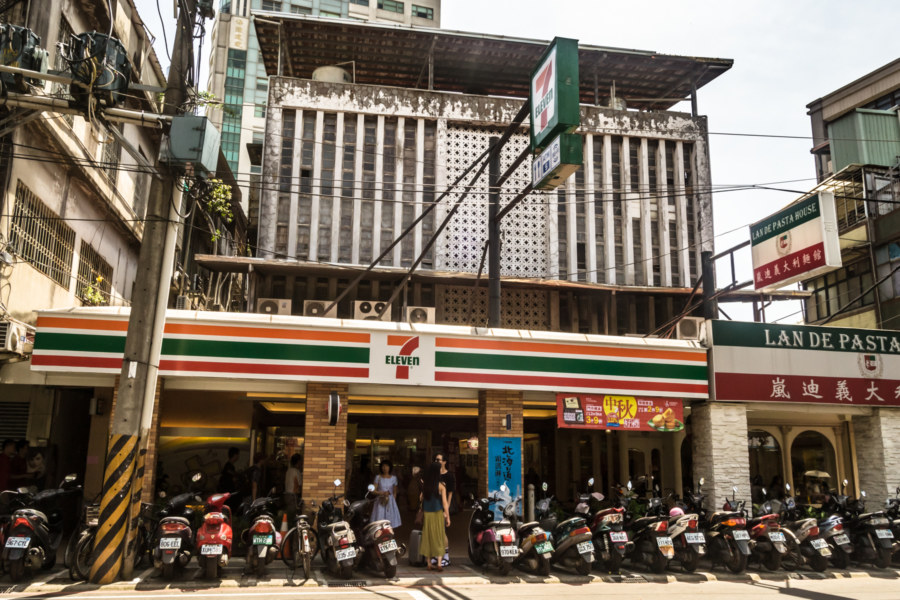
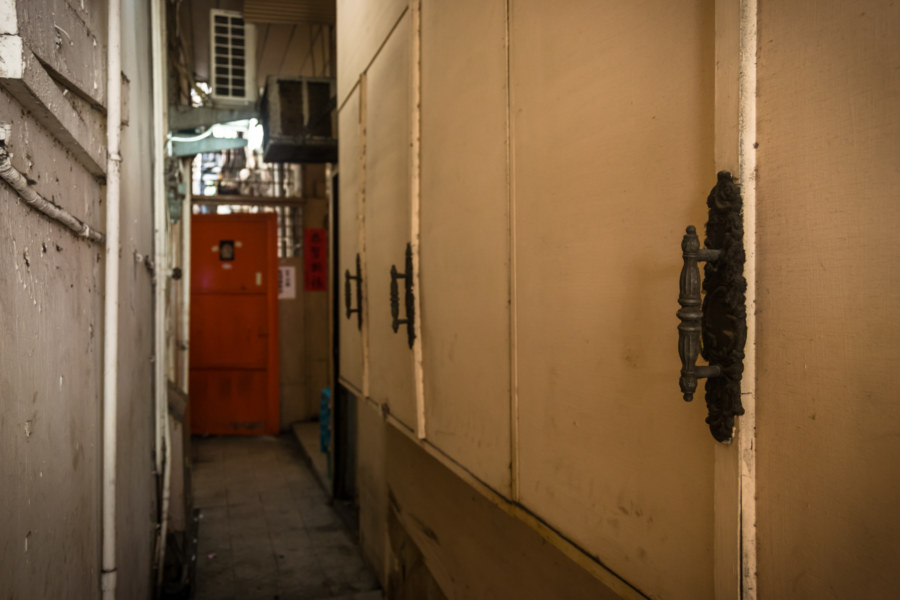
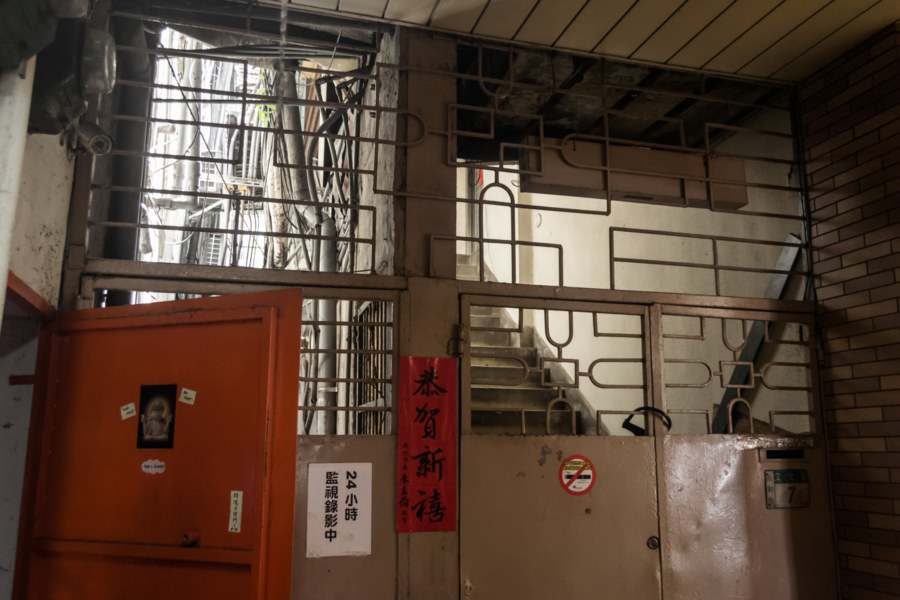

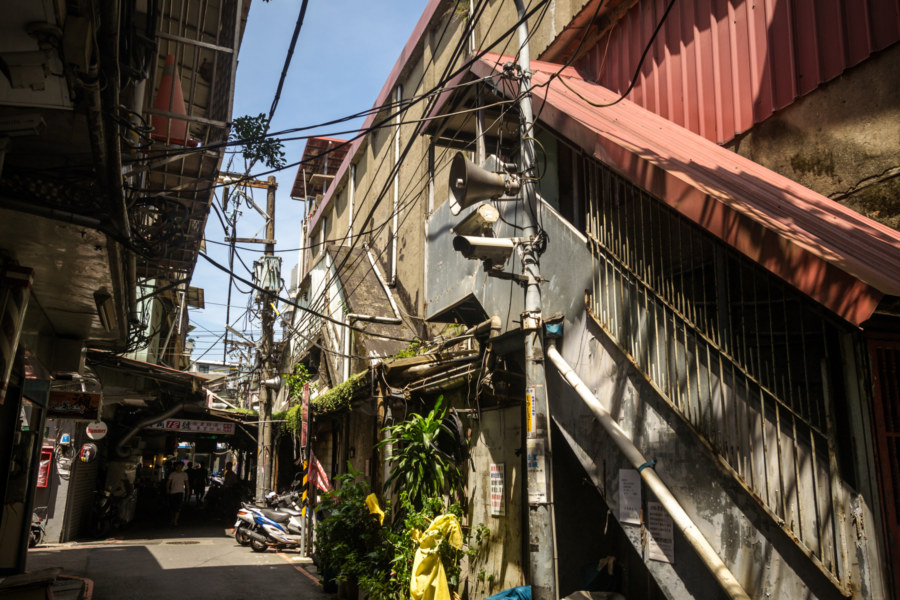
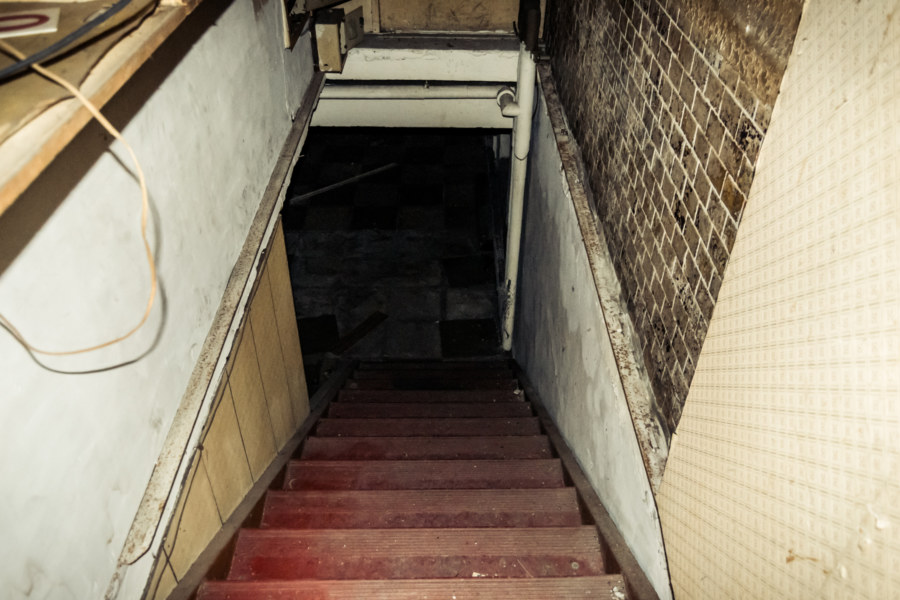
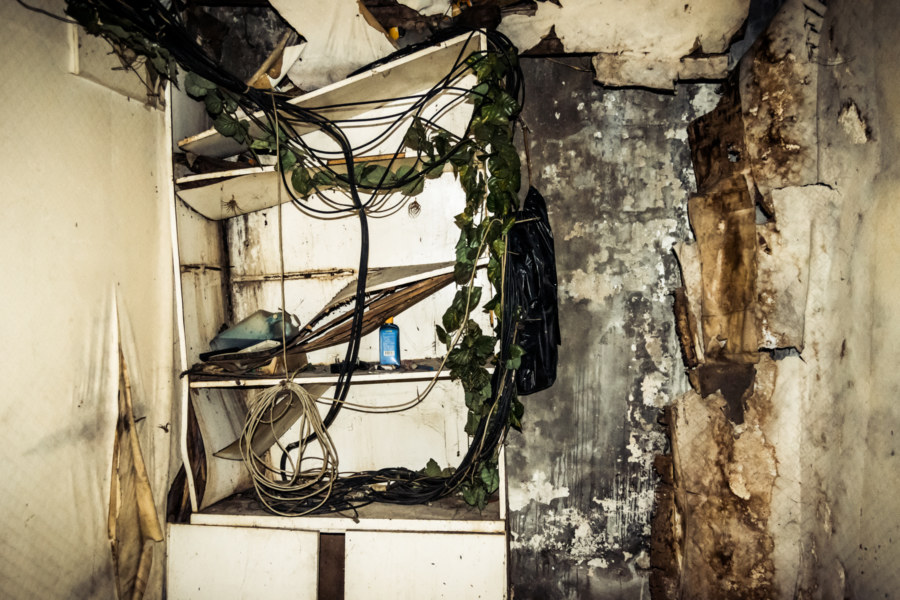
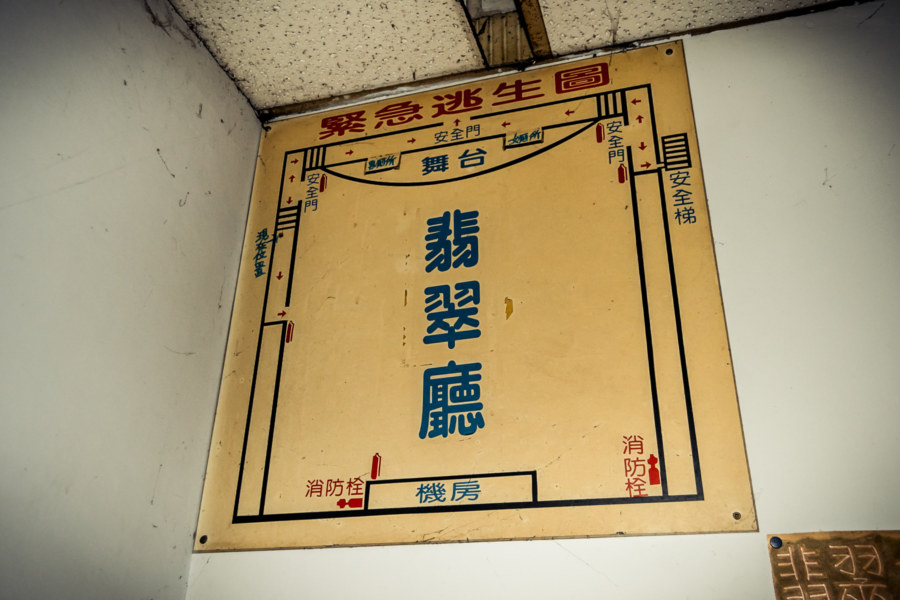
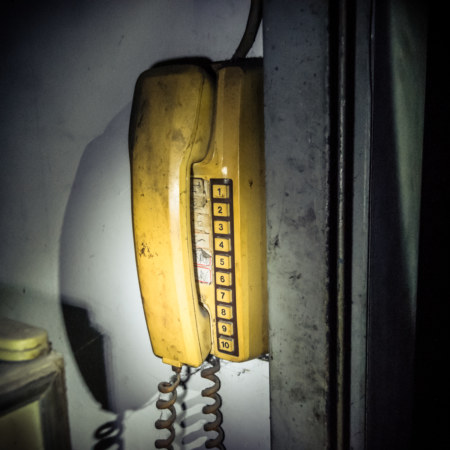
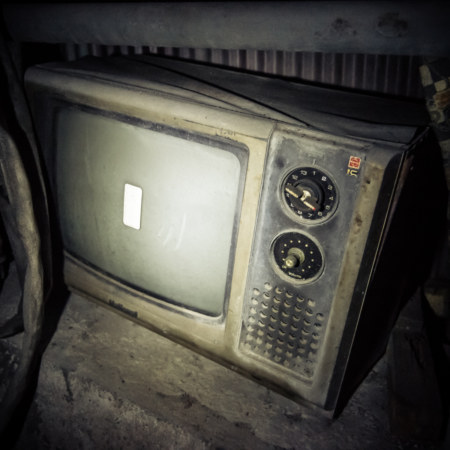
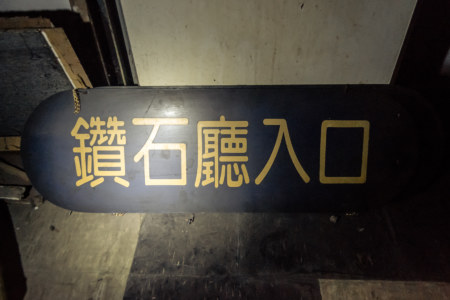
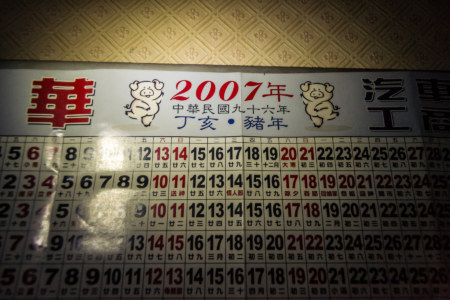
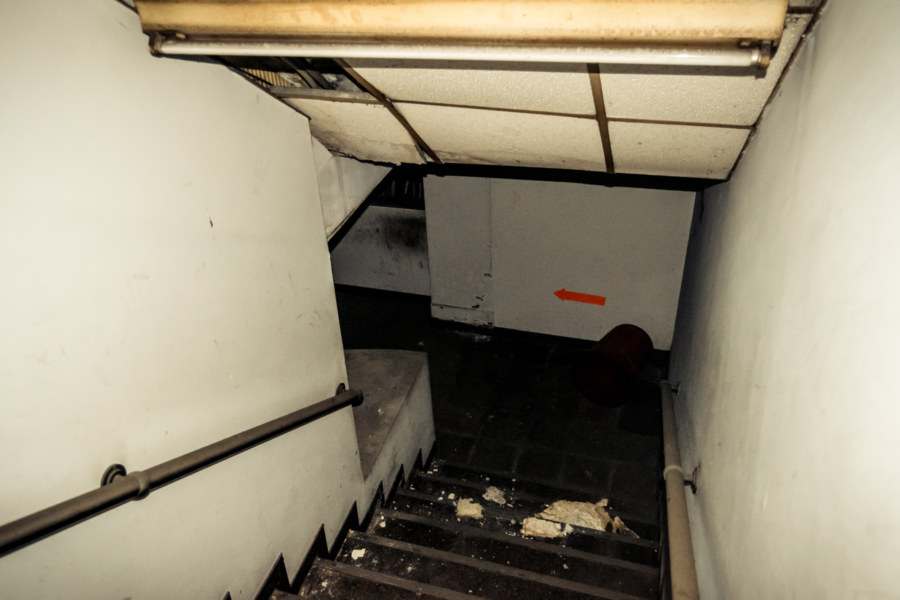
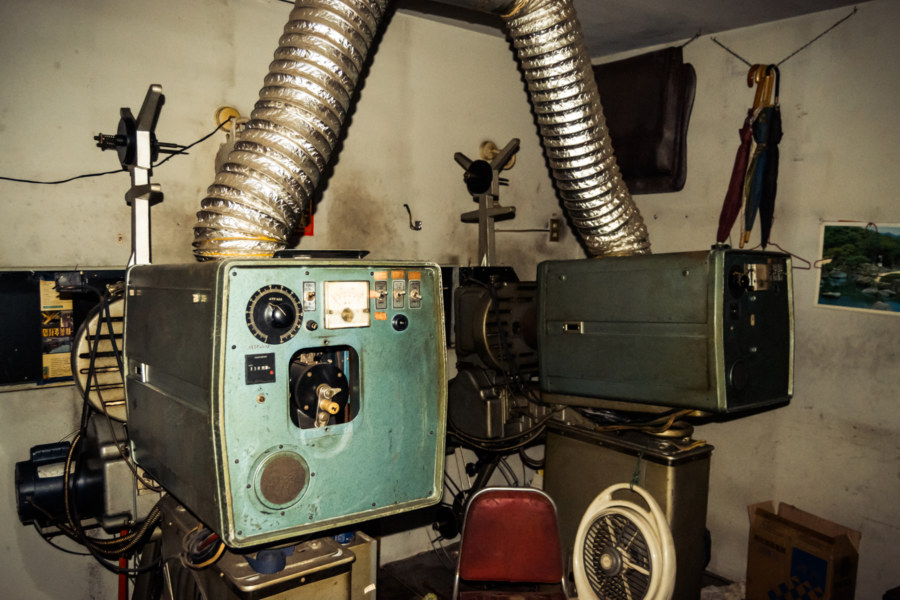
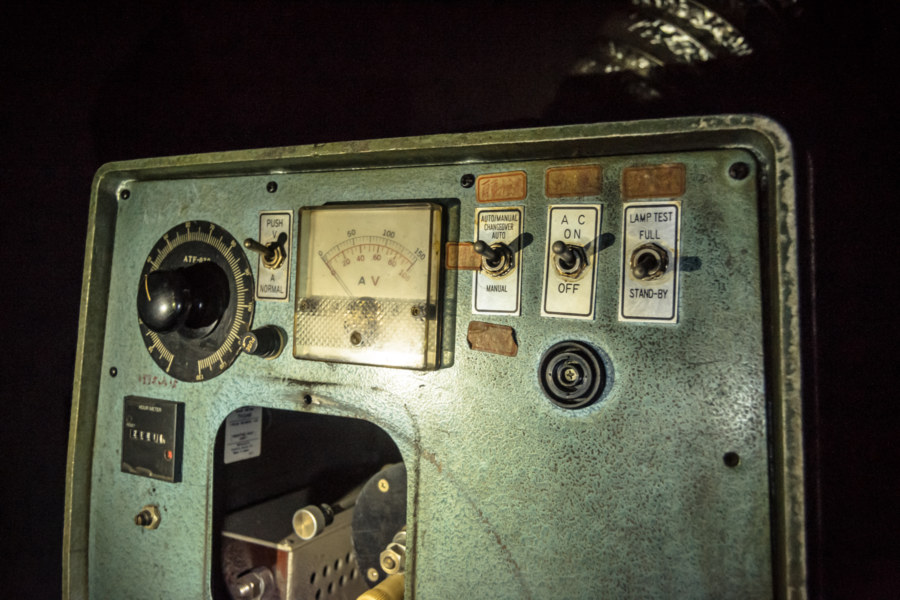
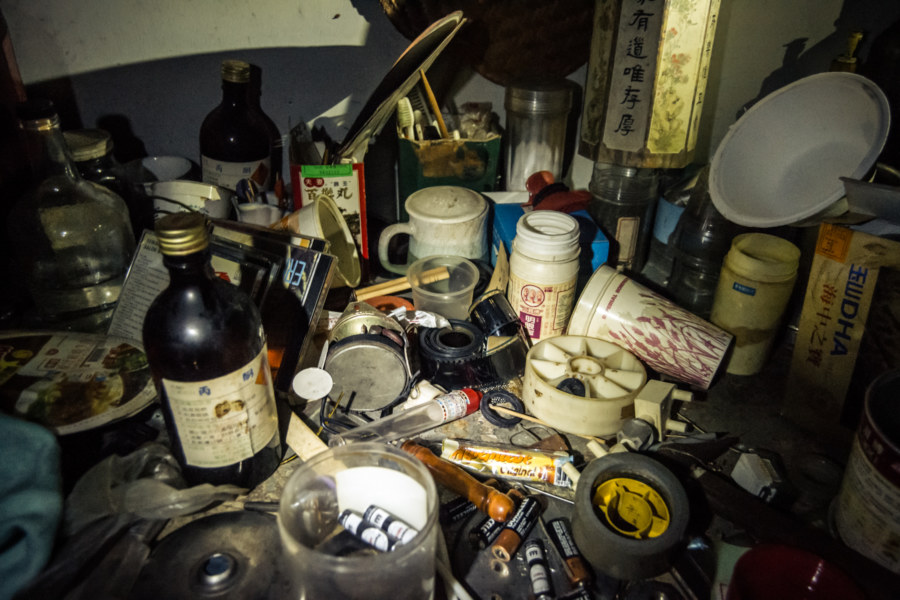
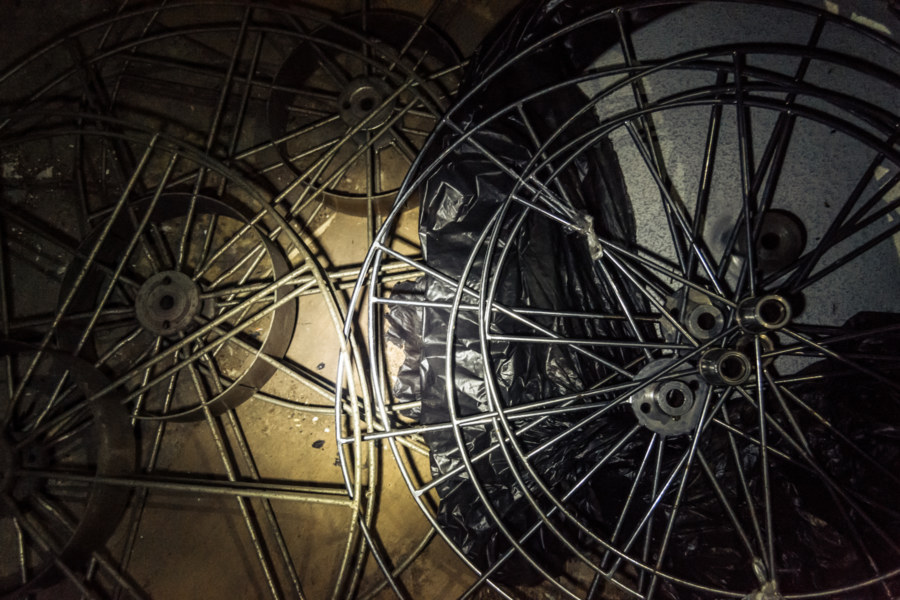
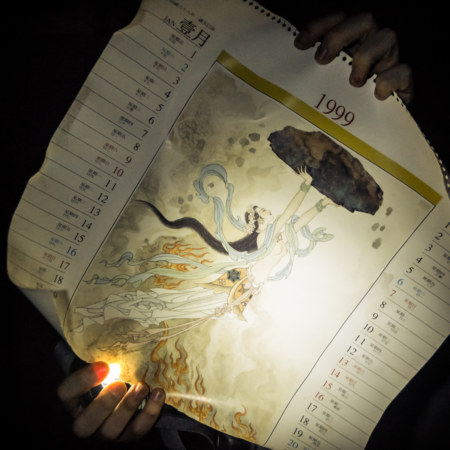
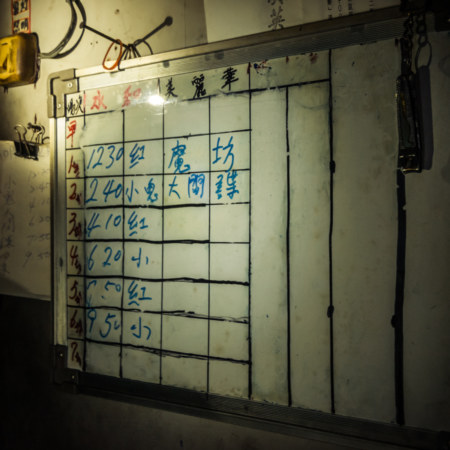
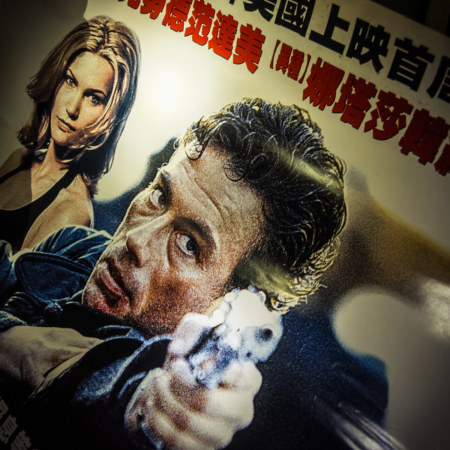
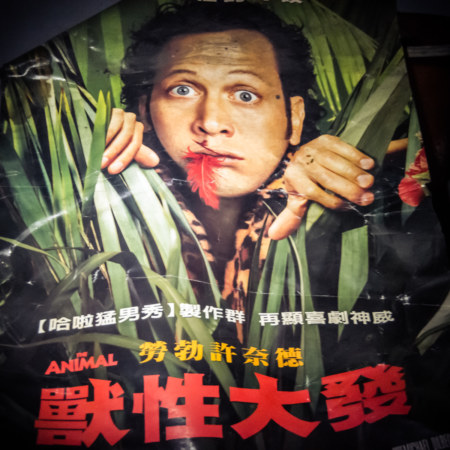
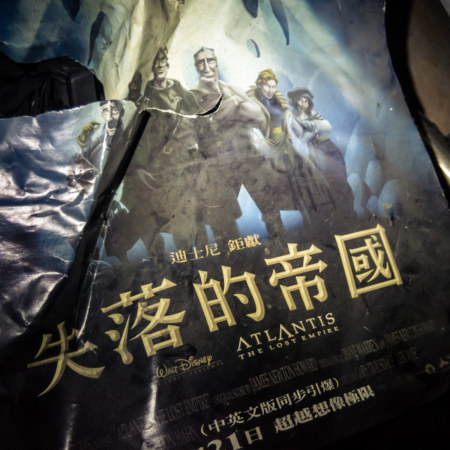

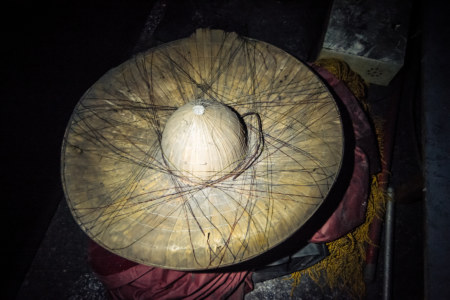
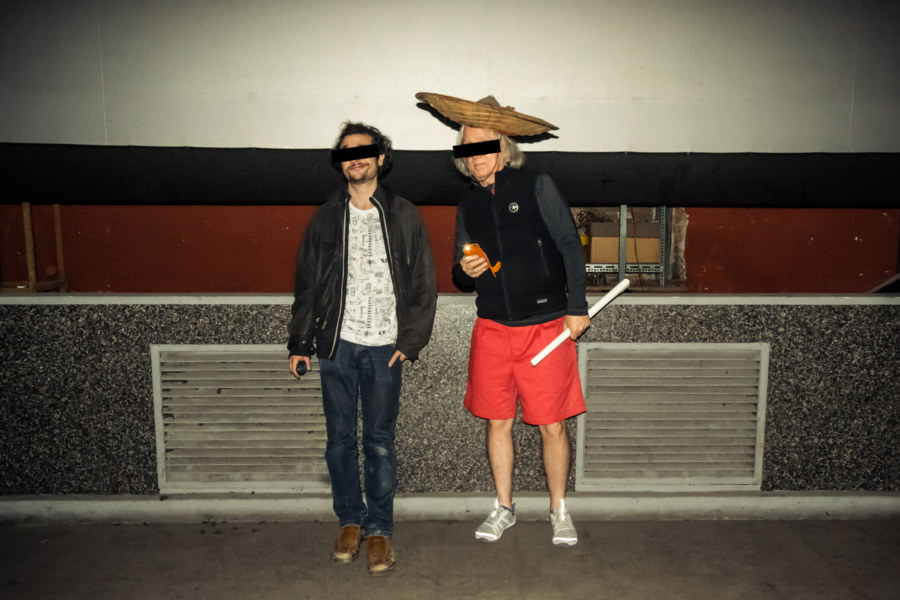
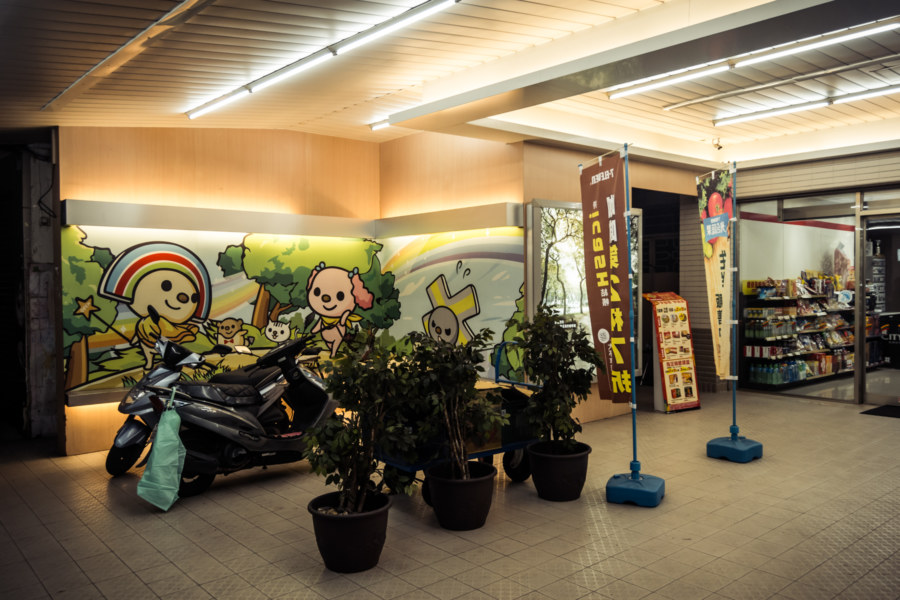
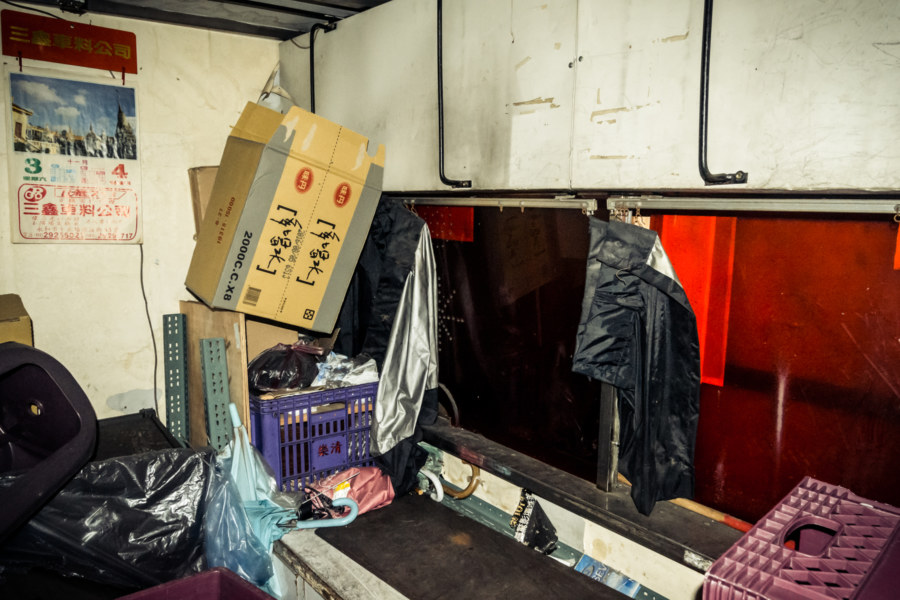
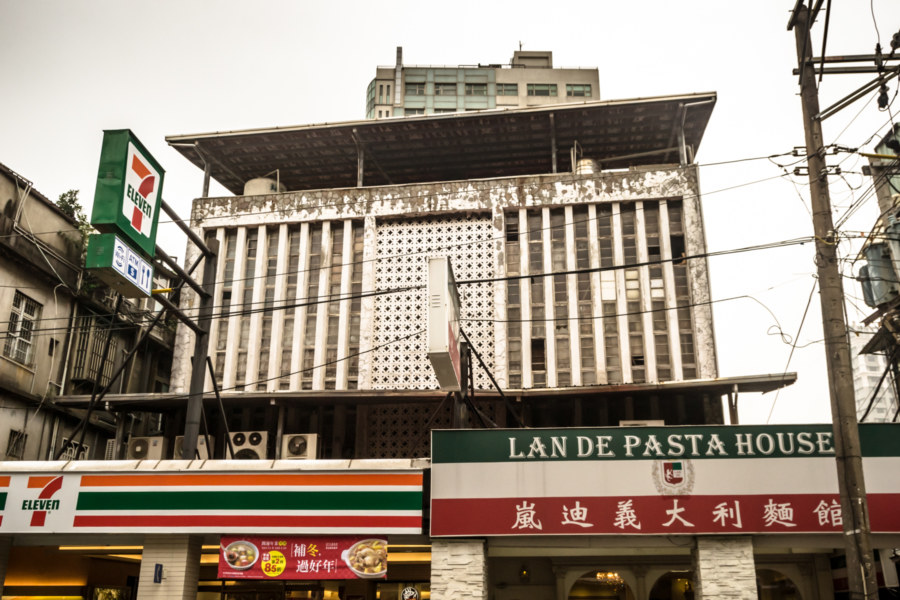
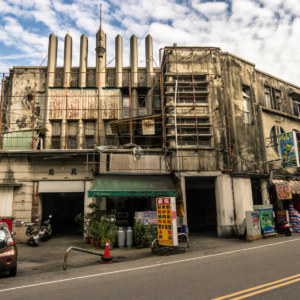
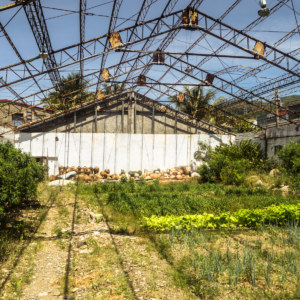
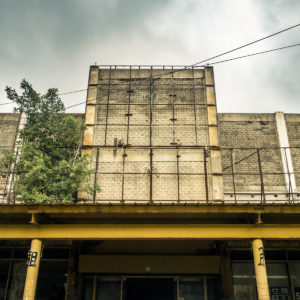
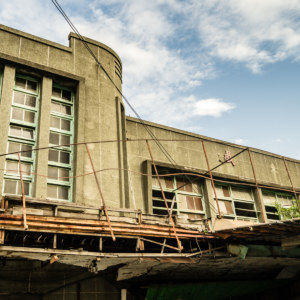
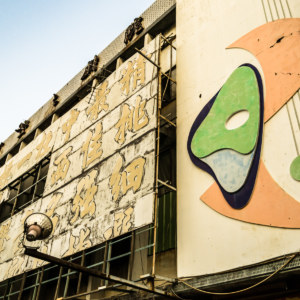
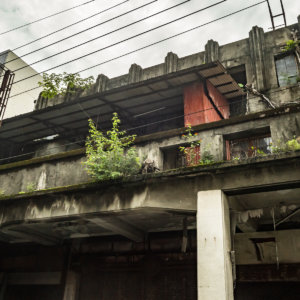
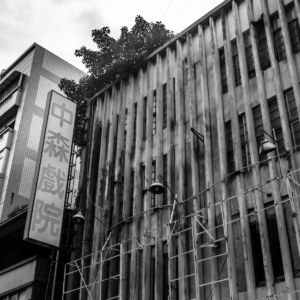
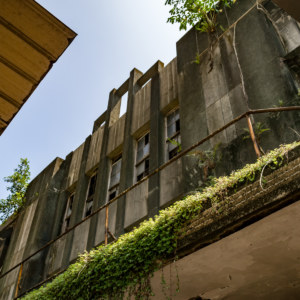
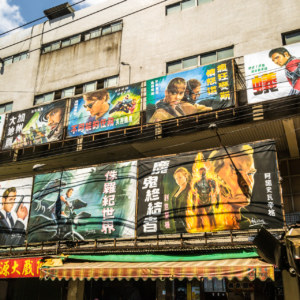
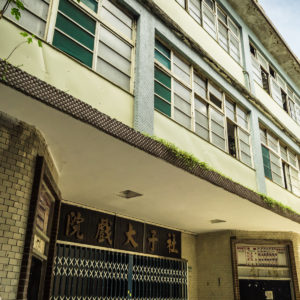
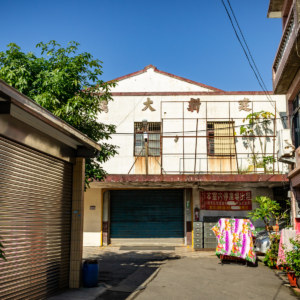
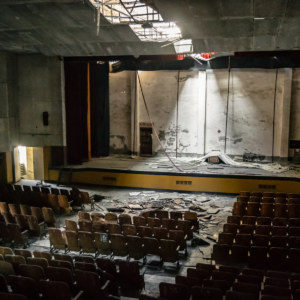
Very Cool Man ! I lived in a place called Zaoquio in Miaoli county,,, south of Hsinchu. I loved it there ! I just found your website so am excited to check out all of your photos and everything ! I’ll pass your site along to a couple of my friends who are still in Taiwan ! ( we’re English Teachers )
Cheers from New York !
Gavin